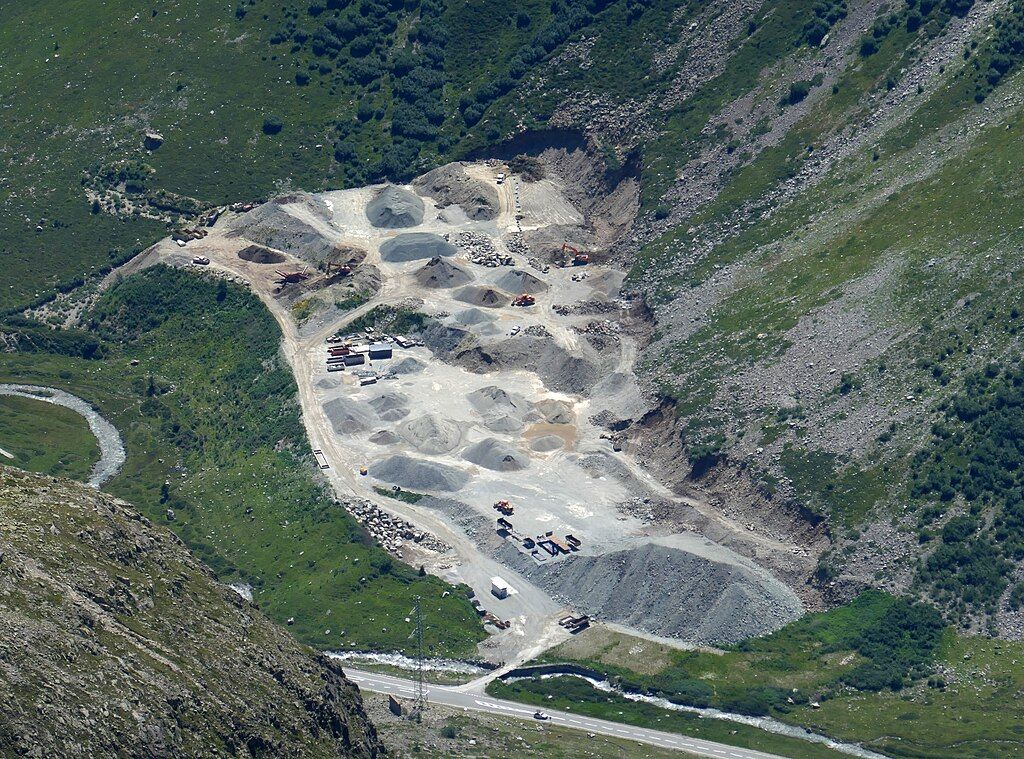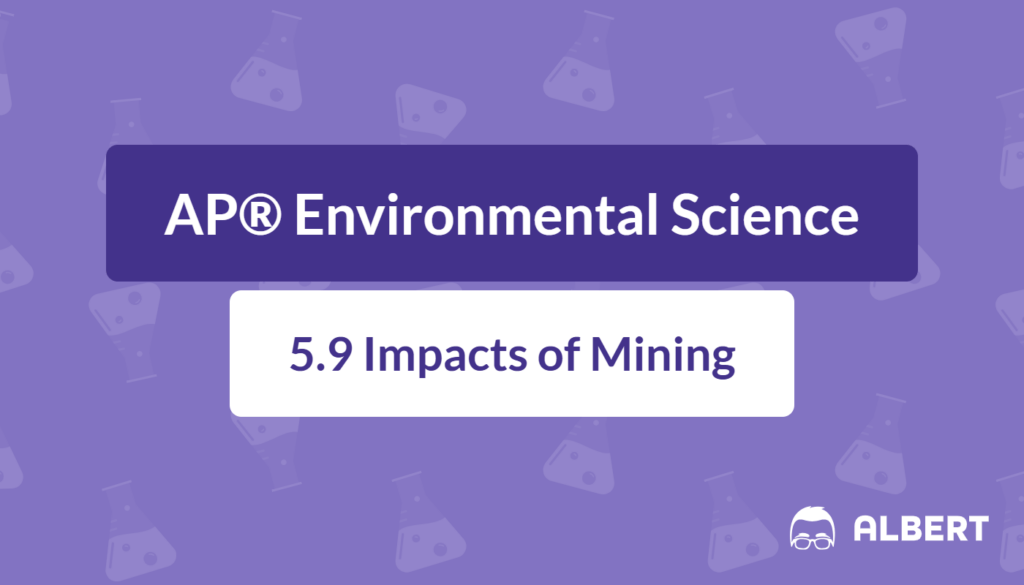What We Review
Introduction
Mining is a critical process that makes modern life possible. Phones, cars, and power plants rely on materials derived from beneath Earth’s surface. However, the process of extracting these valuable minerals and metals can have far‑reaching consequences for ecosystems and communities, including the impacts of mining. In AP® Environmental Science, mining serves as a prime example of how society balances the benefits of resource extraction with the need to preserve environmental health.
Mining involves extracting geological materials—referred to as ores—from the ground. Once these ores are refined, industries can obtain metals such as copper or iron for building everything from electrical wiring to skyscrapers. Nevertheless, mining activities disrupt land surfaces, degrade soil quality, and generate waste products that linger for decades. Therefore, examining the characteristics of mining, as well as its economic and ecological impacts, is essential for those studying resource management and environmental sustainability.
Understanding Mining
Definition and Purpose
Mining can be defined as the removal of valuable minerals or other geological materials from the Earth’s crust. In AP® Environmental Science, this practice is understood as part of a broader system of natural resource extraction. Mining responds to growing industrial demands, especially as easily accessible deposits become scarce. Shifts from high‑grade to lower‑grade ores require more resources and often produce more waste.
Mining operations address the need for raw materials in many sectors:
- Construction (stone, sand, gravel)
- Technology (rare metals used in electronics)
- Energy production (coal and other fossil fuels)
Types of Mining: Surface and Underground
Two primary mining strategies are widely practiced:
- Surface mining
- Underground mining
Surface mining involves removing extensive layers of soil and rock (overburden) to unearth the underlying ore. By contrast, underground mining uses tunnels or shafts to reach deeper deposits. Surface mining is generally more visible and can lead to habitat destruction over large areas; underground mining poses significant risks for miners but often reduces the immediate above‑ground disturbance.

Overview of Surface Mining
Surface mining is particularly problematic because it stresses increased erosion and large soil removal. Strip mining, a specialized form of surface mining, entails stripping away soil and vegetation layer by layer:
- Removal of surface/toplevel soil (called overburden).
- Exposure of the ore beneath.
- Extraction of the ore using heavy equipment.
- Replacement of the overburden—or placement in a waste pile if restoration is not planned.
This sequence often disrupts vast areas, leading to habitat fragmentation and erosion risk. Moreover, overburden and tailings (residual waste after ore processing) can contaminate local waterways if not managed properly.
Resources Extracted from Mining
Essential Minerals and Ores
Ores are naturally occurring solids composed of one or more valuable minerals. These minerals are crushed, processed, and purified to yield metal or other substances needed by various industries. Common examples include iron ore (for steel production) and bauxite (for aluminum).
Mining also targets coal, an important fossil fuel for electricity generation. However, dwindling high‑quality coal reserves compel operators to delve deeper or pursue lower‑grade deposits. Subsurface coal mining becomes more common when easier‑to‑access reserves are depleted, elevating cost and environmental hazards.
Significance to Industries
Many key industries rely on mined resources:
- Automotive manufacturers rely on metals for engines and bodies.
- Electronics industries need rare earth elements for circuit boards and device components.
- Construction projects require large amounts of stone, cement, and metals to support building frameworks.
When mined responsibly, these resources sustain communities by generating jobs and supporting local economies. However, the EI factor (ecological impact) increases if extraction processes degrade environmental quality.
The Environmental Impacts of Mining
Introduction to Ecological Consequences
Mining alters landscapes, creates waste products, and unleashes pollutants into air and water. Soil removal and waste disposal often disrupt local ecosystems. In addition, dust and metal particulates can degrade air quality surrounding mining sites.
Surface Mining Impacts
Surface mining involves clearing vegetation and topsoil to locate ore near the surface. This practice has several consequences:
- Overburden removal leads to habitat destruction.
- Exposed soil becomes prone to rapid erosion, harming local water sources.
- Heavy machinery causes noise and air pollution.
Example: Strip Mining Step by Step
- Before operations start, vegetation clearance exposes the soil.
- Machinery removes topsoil, which is often stored or discarded.
- The ore underneath is extracted, leaving large open pits.
- Leftover waste is stored as spoil banks or tailings piles.
- Reclamation efforts may occur, but significant time and resources are necessary to restore biodiversity.
This chain of events exemplifies how human actions can transform a once‑forested region into a barren landscape. Sediments released from the stripped land can migrate into waterways, harming aquatic life.
Pollution from Mining
Mining activities can emit pollutants that affect air, water, and soil. Some common sources of pollution include:
- Dust particles: Generated by drilling, blasting, and transportation on gravel roads.
- Chemical residue: Resulting from the ore processing stage.
- Heavy metals: Present in runoff from tailings piles, potentially contaminating local streams.
For instance, leftover waste rock can release sulfur compounds, forming acidic runoff that harms aquatic ecosystems. This phenomenon, known as acid mine drainage, has been documented in regions with heavy metallic ore deposits. Over time, these pollutants accumulate in the food chain, affecting both wildlife and human populations.
Economic Impacts of Mining
Economic Benefits
Mining supports numerous local and global economies. Lower‑grade ores, while requiring more resource inputs, still provide vital raw materials. When approached responsibly, operations can:
- Create stable employment for skilled and unskilled workers.
- Generate revenue through the export of precious metals and minerals.
- Advance technology as companies research more efficient extraction methods.
Coal mining, for example, has historically powered entire industrial sectors. In many regions, coal remains a key source of electricity, ensuring relatively low‑cost energy. Therefore, targeted investments in technology and training can enhance economic returns while striving to reduce environmental harm.
The Cost of Mining
Short‑term gains can overshadow long‑term consequences. Environmental degradation, reduced biodiversity, and pollution cleanup demands create high future expenses. Mining wastes—such as slag and tailings—persist in the environment, requiring ongoing measures to avoid catastrophic spills or contamination.
Example: Coal Mining Trade‑Off
- A coal mine brings jobs and tax revenue to a region.
- Local industries benefit from the influx of cheap energy resources.
- However, extraction can release methane and dust, impacting air quality.
- Subterranean water may become contaminated if mining operations intersect with water tables.
- Rectifying these issues imposes significant costs on communities and mining companies over time.
Addressing the Challenges
Sustainable Mining Practices
Several strategies aim to minimize the negative impact of mining:
- Reclamation and restoration: Returning overburden and reestablishing native vegetation after mining operations end.
- Advanced waste management: Using secure storage methods for tailings and minimizing contaminated runoff.
- Water treatment projects: Neutralizing acidic drainage with limestone, or filtering harmful substances before they reach waterways.
- Recycling and reusing metals: Reducing the overall demand for newly extracted minerals.
Implementing these strategies can mitigate threats to local ecosystems and safeguard the health of surrounding communities. Moreover, responsible mining aligns with AP® Environmental Science principles by prioritizing long‑term sustainability.
Role of Technology
Innovations in mining technology continue to emerge, offering improved solutions for resource extraction:
- Automated drilling reduces waste by targeting ore more precisely.
- Remote sensors monitor pollutant levels, allowing swift remediation efforts.
- Microbial techniques help break down contaminants in tailings, restoring soil health.
These advancements highlight how careful planning, strong regulations, and ongoing research can balance economic development with ecological protection.
Conclusion
Mining is a pivotal aspect of modern life because it supplies essential natural resources. However, the extraction process disrupts ecosystems, depletes habitats, and generates pollutants that can linger for decades. The impacts of mining, especially surface mining, remove large portions of soil and rock to access ores, resulting in habitat destruction and soil erosion. At the same time, mining bolsters local economies and delivers materials for infrastructure and technology.
Striking a balance between resource demand and environmental stewardship remains a critical issue in AP® Environmental Science. Beyond economic benefits, there is a growing awareness of the need for regulations, technological innovations, and sustainable mining practices. Understanding these complexities allows students to appreciate both the necessity of mining for modern life and the importance of mitigating its impact on the planet.
Important Vocabulary
- Mining: The extraction of valuable minerals or other geological materials from Earth’s crust.
- Ore: A naturally occurring solid material from which a metal or valuable mineral can be extracted profitably.
- Natural Resources: Materials or substances in nature that can be harvested for economic gain.
- Pollutants: Substances that contaminate and degrade the environment.
- Surface Mining: A method of mining that involves removing large portions of soil and rock (overburden) to access ore beneath.
- Overburden: The soil and rock layer lying above an ore deposit that is removed during surface mining operations.
Sharpen Your Skills for AP® Environmental Science
Are you preparing for the AP® Environmental Science test? We’ve got you covered! Try our review articles designed to help you confidently tackle real-world AP® Environmental Science problems. You’ll find everything you need to succeed, from quick tips to detailed strategies. Start exploring now!
Need help preparing for your AP® Environmental Science exam?
Albert has hundreds of AP® Environmental Science practice questions, free response, and full-length practice tests to try out.








